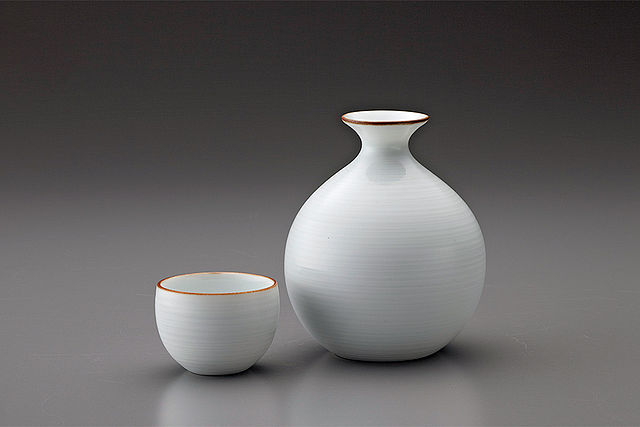Hakuji (白磁) is a form of Japanese pottery and porcelain, normally white porcelain, which originated as an imitation of Chinese Dehua porcelain. Today the term is used in Japan to refer to plain white porcelain.
Hakuji white porcelain Arita ware hexagonal bowls and dishes, late Edo period to early Meiji era, 1840–1870
Dehua kiln statue of Buddhist Kannon used for Christian veneration in Japan
Hakuji sake set designed by Masahiro Mori (1977)
Dehua porcelain, more traditionally known in the West as Blanc de Chine, is a type of white Chinese porcelain, made at Dehua in the Fujian province. It has been produced from the Ming dynasty (1368–1644) to the present day. Large quantities arrived in Europe as Chinese export porcelain in the early 18th century and it was copied at Meissen and elsewhere. It was also exported to Japan in large quantities. In 2021, the kilns of Dehua were inscribed on the UNESCO World Heritage List along with many other sites near Quanzhou for their importance for medieval maritime trade and the exchange of cultures and ideas around the world.
Dehua porcelain statue of Guanyin, Ming Dynasty
Dehua porcelain ink brush holder, with design of carved cranes and lotuses worked into the paste. Late 17th-18th century (Qing dynasty), 9.7 cm (3.8 in) tall
Dehua kiln statue of Buddhist Kannon used for Christian veneration in Japan
Guanyin Bodhisattva made by He Chaozong, a famed 17th-century artist from the Ming dynasty who fashioned mainly Buddhist white porcelain statuary in the tradition of the Dehua kilns in Fujian province.






